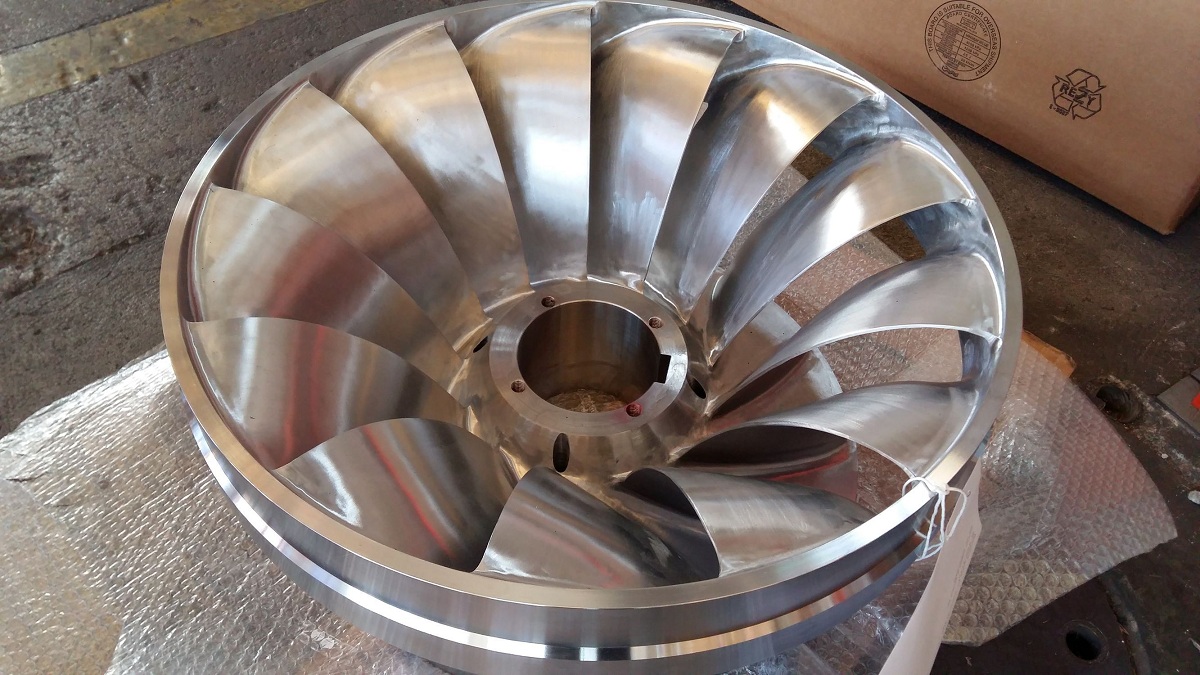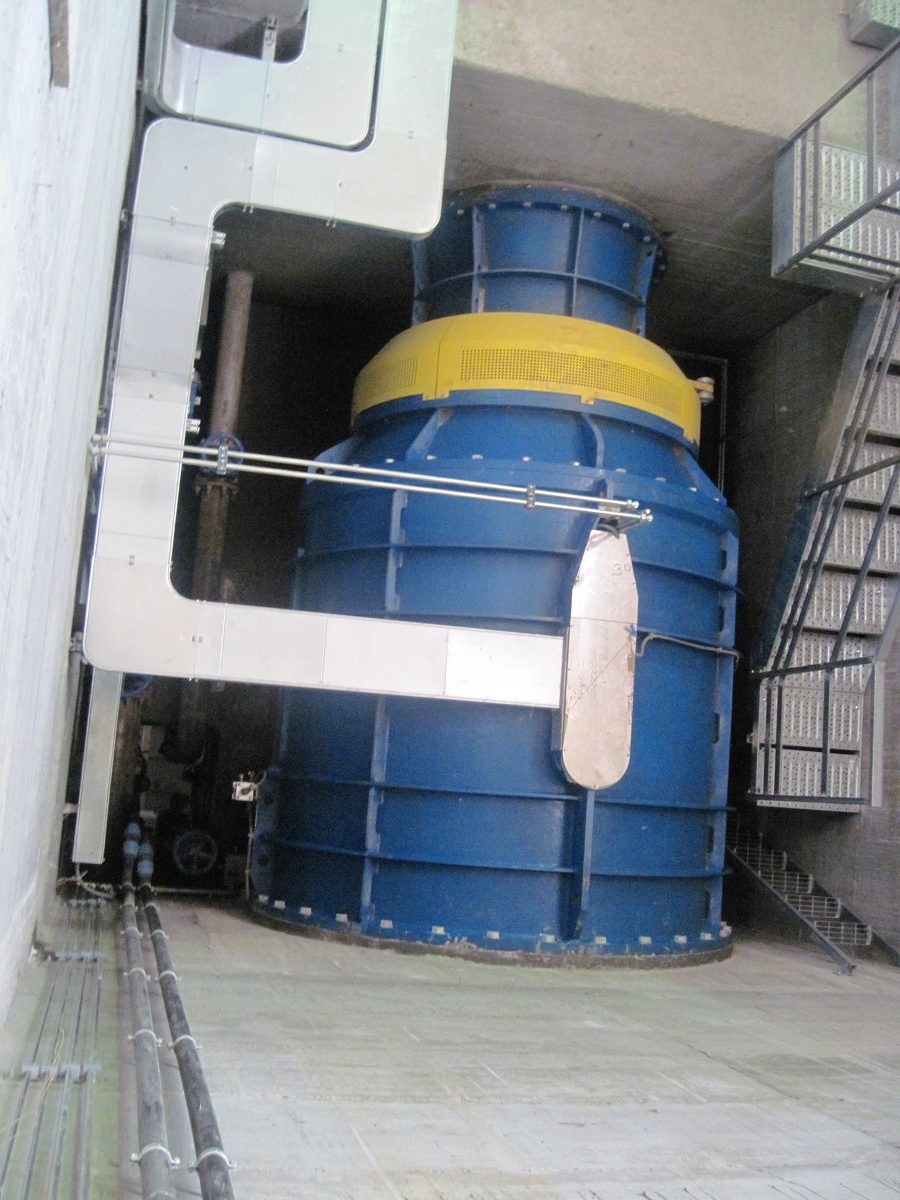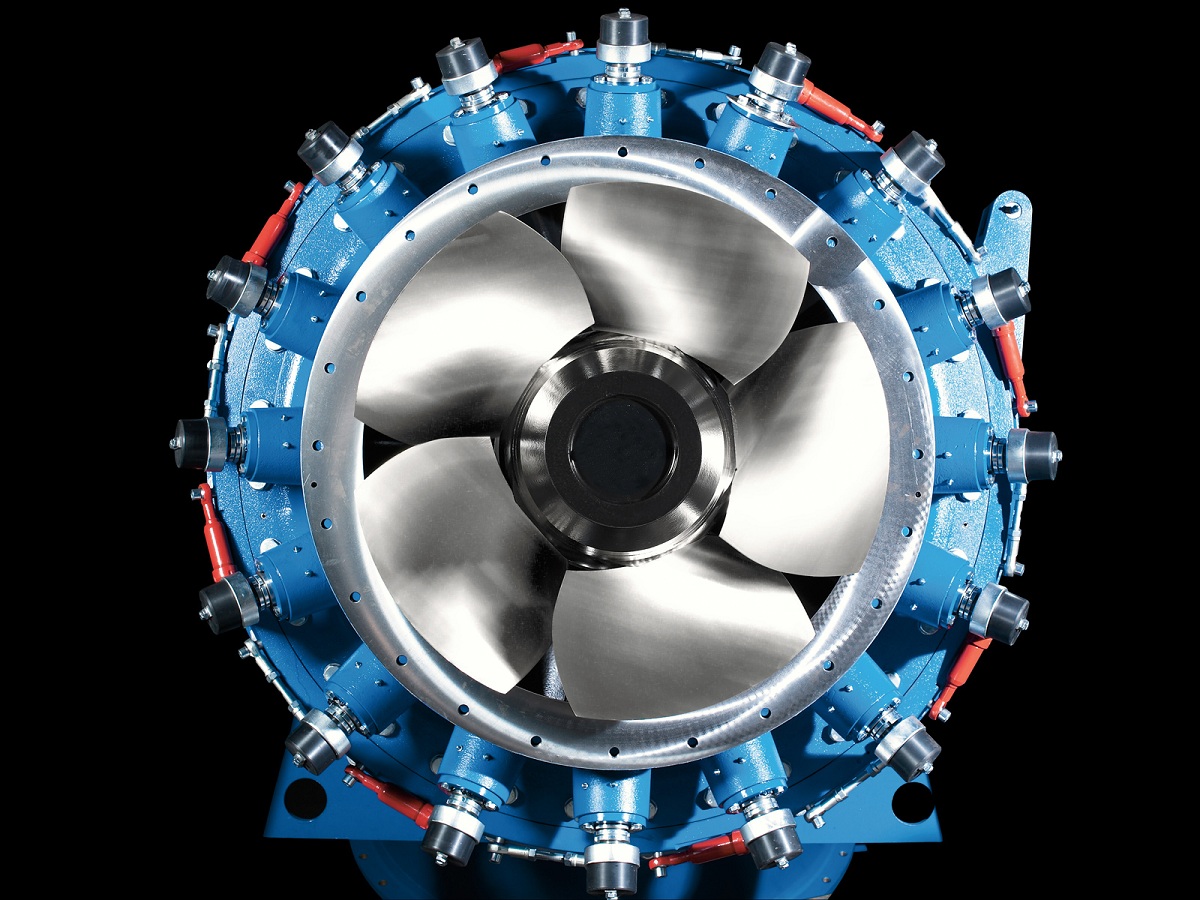
As we know, to generate hydraulic energy we have to pour a large amount of water through a waterfall to be able to move a turbine. One of the most used turbines in hydraulic energy is the Kaplan turbine. It is a hydraulic jet turbine that is used with small gradients up to a few tens of meters. Flow is always needed is large so that a large amount of energy can be generated.
In this article we are going to tell you what the Kaplan turbine consists of, what its characteristics are and how it is used to generate hydraulic energy.
What is the Kaplan turbine

It is a hydraulic jet turbine that uses small gradients in height from a few meters to a few tens. One of the main characteristics is that it always works with high flow rates. Flows ranging from 200 to 300 cubic meters per second. It is widely used for the generation of hydraulic energy, this being a type of renewable energy.
The Kaplan turbine was invented in 1913 by Austrian Professor Víktor Kaplan. It is a type of propeller-shaped hydraulic turbine where they have blades that can be oriented to the different flow of water. We know that the flow of water varies depending on the intensity of the volume. By being able to have blades that are oriented to the flow of water, we can increase performance by keeping it high up to flow rates of 20-30% of the nominal flow.
The most normal thing is that this turbine comes equipped with fixed stator deflectors that help guide the water flow. In this way, the generation of electrical energy is optimized. The efficiency of the Kaplan turbine can be used for a wider range of flow depending on the needs. Ideally, the turbine should be prepared using an orientation system in which we place the stator deflectors when the flow changes. We do not always have the same water flow since we depend on rainfall and reservoir levels.
When the fluid reaches the Kaplan turbine, thanks to a spiral-shaped conduit, it serves to feed the entire circumference completely. Once the fluid has reached the turbine it passes through a distributor that gives the fluid its rotary rotation. It is here where the impeller is responsible for diverting the flow to 90 degrees to reverse it axially.
Key features

When we have a propeller turbine we know that the regulation is practically zero. This means that the turbine can only work in a certain range, so the distributor is not even adjustable. With the Kaplan turbine we get the orientation of the impeller blades to adjust to the water flow. In addition, the movement adapts to the current flow. This is because each distributor setting corresponds to a different orientation of the blades. Thanks to this, it is possible to work with higher yields of up to 90% in a wide range of flow rates.
The field of use of these turbines reaches maximum drops of around heights of 80 meters and flows up to a flow rate of 50 cubic meters per second. This partially overlaps the field of use of the Francis turbine. This turbines they only reached a 10 meter drop and exceeded 300 cubic meters per second in flow.
To optimize the generation of hydraulic energy it is very common to see Kaplan turbines. They are propeller turbines that operate at full capacity and respond well to any excess fluid. Thanks to these turbines they eliminate a large amount of installation costs since this turbine is more expensive than a propeller turbine but the installation becomes much more efficient in the long term.
How turbines work in hydropower

If we want to keep a voltage output constant in a hydroelectric installation, the speed of the turbine must always be kept constant. We know that water pressure varies depending on the flow rate and the intensity at which it falls. However, the turbine speed must be kept constant regardless of these pressure variations. In order to remain stable, a large number of controls are required in both the Francis turbine and the Kaplan turbine.
Pelton wheel installations are often made in which the flow of water is helped to control by opening and closing the ejector nozzles. When there is a Kaplan turbine in the facility, a discharge bypass nozzle is used to help deflect rapid current changes in the drop channels that can suddenly increase the water pressure. In this way we ensure that the propellers are always kept in a constant way and are not affected by changes in water pressure. These increases in water pressure are known as water hammers. They can be very damaging to facilities.
However, with all these settings, a constant flow of water is maintained through the nozzles so that the movement of the turbine blades is kept stable. To avoid water hammers, the discharge nozzles are closed slowly. The turbines used for the generation of hydraulic energy vary according to some types:
- For large jumps and small flow rates Pelton turbines are used.
- For those smaller heads but with a higher flow Francis turbines are used.
- En very small waterfalls but with a very large flow Kaplan and propeller turbines are used.
Hydroelectric plants depend on a large amount of water that is contained in reservoirs. This flow must be controlled and can be kept almost constant so that the water can be transported through the ducts or penstocks. The flow is controlled through valves to adapt the flow of water that passes through the turbine. The amount of water that is allowed to pass through the turbine depends on the electricity demand at each moment. The rest of the water comes out through the discharge channels.
I hope that with this information you can learn more about the Kaplan turbine and hydropower generation.